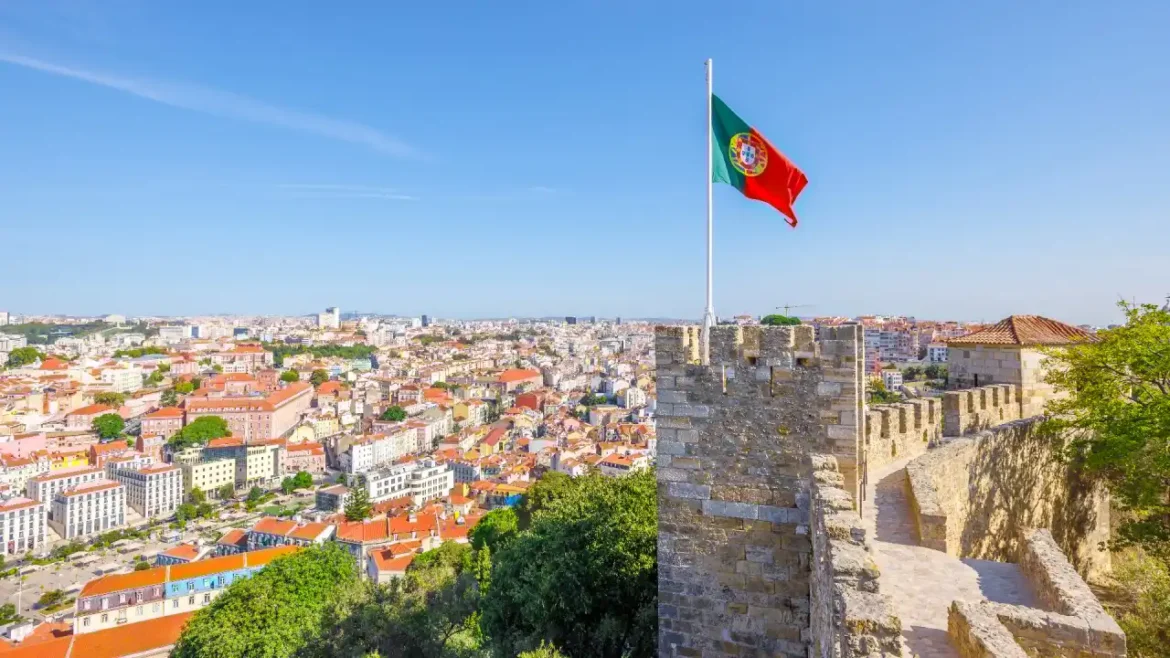Portugal, perched on Europe’s western edge, is a land of sun-drenched coastlines, historic cities, and heartfelt hospitality. From the cobbled streets of Lisbon to the vineyards of Douro Valley, the country enchants travelers with its rhythm of fado music, rich maritime past, and mouth-watering cuisine.
Known for its Atlantic beaches, tiled architecture, and easygoing lifestyle, Portugal blends old-world charm with modern vibrancy. Whether you’re surfing in Nazaré, tasting Port wine in Porto, or wandering the medieval alleys of Évora, Portugal invites you to slow down and savor every moment.
Geography & Climate
Portugal stretches along the Atlantic Ocean, bordered by Spain to the east. Its landscapes vary from green northern valleys to golden southern shores.
Climate Overview:
- Spring (March–May): Mild and colorful, perfect for city exploration.
- Summer (June–August): Hot, sunny, and ideal for beaches.
- Autumn (September–November): Warm seas and fewer crowds.
- Winter (December–February): Cooler but pleasant in the south.
Average temperatures range between 15°C and 30°C (59°F–86°F), making Portugal a year-round destination.
Top Destinations & Attractions
Lisbon – The Capital of Light
Built on seven hills overlooking the Tagus River, Lisbon is a city of pastel buildings, tram rides, and scenic viewpoints.
- Belém Tower & Jerónimos Monastery: Landmarks of Portugal’s Age of Discovery.
- Alfama District: Winding alleys filled with fado music and local taverns.
- Tram 28: A classic way to see the city’s historic quarters.
- Miradouros (Viewpoints): Sunset panoramas from Santa Luzia or São Pedro de Alcântara.
Lisbon’s charm lies in its effortless blend of history, art, and café culture.
Porto – City of Wine and Bridges
Set on the banks of the Douro River, Porto is famous for its atmospheric old town and Port wine.
- Ribeira District: A UNESCO-listed neighborhood of colorful houses and riverside restaurants.
- Dom Luís I Bridge: Iconic double-deck bridge connecting Porto and Vila Nova de Gaia.
- Port Wine Cellars: Sample vintages in centuries-old cellars across the river.
- Livraria Lello: One of the world’s most beautiful bookstores.
Porto’s soulful character, steep hills, and warm locals make it irresistible.
The Algarve – Portugal’s Sun-Soaked Coast
The Algarve region in southern Portugal is a paradise of golden beaches and rugged cliffs.
- Lagos & Albufeira: Lively resort towns with pristine coves.
- Benagil Cave: A stunning sea cave accessible by boat or kayak.
- Ponta da Piedade: Dramatic limestone formations above turquoise waters.
- Ria Formosa Lagoon: A haven for birdwatchers and nature lovers.
The Algarve offers relaxation, adventure, and some of Europe’s most scenic coastlines.
Sintra – Fairytale Hills
A short trip from Lisbon, Sintra is a storybook town set amid pine-covered hills.
- Pena Palace: A colorful Romantic-era castle overlooking the valley.
- Quinta da Regaleira: Mysterious gardens, tunnels, and initiation wells.
- Moorish Castle: Ancient ruins with panoramic views.
Sintra’s mix of myth and grandeur makes it one of Portugal’s most enchanting destinations.
Douro Valley – Vineyards & River Views
The Douro Valley is Portugal’s oldest wine region and a UNESCO World Heritage site.
- River Cruises: Scenic boat journeys between vineyards and villages.
- Wine Estates: Taste local reds and Ports amid rolling hills.
- Peso da Régua & Pinhão: Charming towns at the heart of the valley.
With terraced hillsides and timeless beauty, the Douro is the essence of rural Portugal.
Évora – Timeless Heritage
In the Alentejo region, Évora is a beautifully preserved medieval city.
- Roman Temple of Diana: One of the best-kept Roman ruins in Iberia.
- Évora Cathedral: A mix of Romanesque and Gothic styles.
- Chapel of Bones: A haunting yet fascinating landmark.
Évora’s tranquil pace and history-filled streets reveal Portugal’s ancient soul.
Culture & Traditions
Portugal’s culture reflects centuries of exploration and artistry.
- Language: Portuguese.
- Religion: Predominantly Roman Catholic.
- Music: Fado, soulful songs of longing and love.
- Festivals: Festas Santos Populares (summer street festivals) and Carnaval celebrations.
- Art: Intricate azulejo tiles and Manueline architecture adorn buildings across the country.
Hospitality and community define Portuguese life, often shared over a hearty meal and good wine.
Cuisine
Portuguese cuisine is simple, flavorful, and heavily influenced by the sea.
- Bacalhau: Salted cod prepared in countless ways.
- Grilled Sardines: A summer favorite along coastal towns.
- Caldo Verde: Traditional kale and potato soup.
- Francesinha: Porto’s famous layered meat sandwich.
- Pastel de Nata: Creamy custard tart sprinkled with cinnamon.
- Port Wine & Vinho Verde: Iconic Portuguese beverages.
Meals are leisurely and social, best enjoyed with conversation and sunshine.
Best Time to Visit
The best times to visit Portugal are spring (April–June) and autumn (September–October). The weather is pleasant, and major sights are less crowded.
Summer is ideal for beach lovers, while winter suits cultural trips and quiet getaways in the south.
Travel Tips
- Visa: Schengen visa required for many visitors.
- Currency: Euro (€).
- Transport: Trains and buses efficiently link cities; car rentals ideal for rural areas.
- Tipping: Not mandatory; rounding up or 5–10% is appreciated.
- Safety: Portugal is one of Europe’s safest and friendliest destinations.
Why Visit Portugal
Portugal offers a perfect balance of heritage, hospitality, and natural beauty. Whether you’re walking the hills of Lisbon, relaxing on Algarve beaches, or tasting wine in the Douro, the country feels both familiar and fresh.
Charming, affordable, and full of soul, Portugal is a destination that leaves a lasting imprint, a place where every sunset feels like a warm invitation to stay a little longer.
